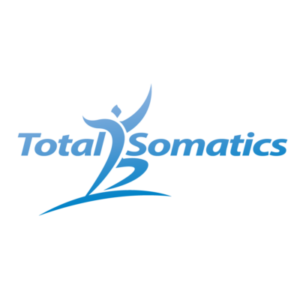Is it Good to Stretch?
For many years people thought stretching was the solution for tight, tense muscles. However the tide is turning and researchers are now starting to realise that it actually creates more problems and injuries. In today’s blog we will consider why stretching is being considered an outdated technique.
Injuries caused by Stretching
For many years we heard ‘experts’ say to stretch before exercise. Then a few years ago the advice changed from stretching before exercise to slowing warming muscles through gentle movement. The science was showing there was no benefit to stretching before exercise. Fast forward a few years and we are now seeing that the researchers are now questioning and advising people to avoid stretching after exercise too! If you are a regular reader of my blogs, you will know that as a Clinical Somatic Educator, I have been educating clients about their muscles over the years, advising them not to stretch, instead to PANDICULATE.
In clinical practice it is interesting to see people hold on to belief systems even when the science has been presented to them. Often the thought that mindful pandiculations can actually soften the belly of their muscles and improve their flexibility can be a challenge for them to compute! Unless they are breaking out in to a sweat, creating an eye watering back bend, breathing through pain or a stretch, they actually don’t think they are achieving anything. Yet, when they work effectively and efficiently with their ‘software’ or brain (which controls all muscle contraction and relaxation), they realise that changes can be made.
Interestingly enough, I often find that clients who find the concept of PANDICULATION a challenge often operate in life and leisure at 150km per hour! Their muscles are continually ‘fired up’ because they thrive on pushing harder and faster. I then ask clients,"if your nervous system has dialed up your stress response to high levels, in order to keep you operating at the intense state, how do you think that is reflected in your muscles? Will your muscles be soft and relaxed? Or will they be hypersensitive, hypervigilant and bathing in cortisol, therefore increasing the levels of inflammation and muscular rigidity?"
So when a person who is constantly ‘fired up’ suddenly wants to release muscle tension, their personality will become involved. Instead of mindfully listening to the feedback from the sensors within their muscles and noticing the end range of their movement, their approach becomes very different. With their very strong will power, they are determined to continue to aim towards ‘goals’ of attaining a certain range by X amount of time. This mindset is moving away from mindfulness to an ego centric mindset. At this point, they are putting further pressure on themselves and tightening their muscles. This is all happening subconsciously. Due to very common scenarios such as this, I have seen clients over the years who have sustained injuries from stretching because they are unable to read the sensory feedback from their body. When I introduce them to PANDICULATION, they are amazed how powerful the 3 step process is. However before I introduce pandiculation to you further, let me share some information from others in the field of health in regards to stretching.
Keeping up to date
If you are a regular reader of my Facebook posts (@TotalSomatics), you will see recently I shared an article from dancemagazine.com.au. The article was entitled “Why the Australia Ballet dancers quit stretching.” The article highlighted a decade long study look at stretching. The experts are realizing that slowly moving the body before and after dancing has many more benefits than stretching. Movement involves muscle memory (a functional practice), which is actually what pandiculation is designed to do.
According to Sue Mayes, head physiotherapist at The Australian Ballet, she reveals the following,
“Muscles shouldn’t be passively stretched and many of our dancers were doing calf stretching on wooden boxes with a decline on them. They are in every studio for the dancers to stretch out their calves, so we have removed all the calf stretching blocks from the studios and educated the dancers on the importance of not stretching their calves out; and now it’s very rare; I don’t ever see a dancer stretching their calves. Over time we have seen significant reduction in calf tears. We have since been trying to change the dialogue because when you say the word “stretch” or “flexibility” people assume that it is a passive stretch and that you’re stretching out tissues and elongating them in a passive way, like a dancer sitting in side splits, but is that functional? When a dancer is on stage, they never stay in passive positions; they’re dancing dynamically and moving in and out of these extreme ranges of movement. Dancers need optimal range of movement, they need to be able to move their limbs through extreme ranges of movement, but it should be in a really active controlled way that they do that.”
I found this article very interesting because just like Clinical Somatic Educators, Sue Mayes mentioned how education is key to changing old habits and beliefs. Dancers are high achievers and always wanting to place high standards on everything they do, because it is a competitive line of business. So by educating them to fully understand that movement is much more beneficial and will have long term benefits for the health of their muscles is imperative. It is moving their mindset away from stretching and flexibility to movement. I often find within workshops, online or in clinical practice that some clients will ask if they can achieve the splits or a back bend by pandiculating muscles. It is at that point that I encourage them to change their focus. I ask them, "What would you prefer, being able to move freely with reduced pain and improved posture into their 80s and 90s or to wrap their legs around their head? It may sound flippant, yet what is their focus? Surely to maintain good movement, healthy muscles, reduction in recurring injuries and a full understanding of what is actually going on subconsciously with their muscles is much more important and mindful.
The Power of Pandiculation
The Power of pandiculation is truly amazing. I often share photos of clients, with their permission, to highlight how quickly their brain to muscle connection creates changes. This client below has a very active life and loves cycling and weight training. However her muscles were starting to create rigidity and discomfort. Within a few days, the sensors within her muscles had reset to allow her to lengthen and release, WITHOUT STRETCHING.

To read my blogs which go into detail about pandiculation, check them out below:
Why Pandiculation, not stretching reduce pain, improves posture & increases mobility
What is the difference between stretching & Pandiculation?
Does strengthening your core really ease back pain?
How Mindful Somatic Movement influences your nervous system
We live in an amazing time, thanks to all the research in neuroscience, pain science and sports science. They are beginning to realise that mindful movement is the way forward to release chronically tight muscles, something Thomas Hanna and Clinical Somatic Educators have been saying for many years!
Would you like to learn how to pandiculate in the comfort of your own home? Would you like to learn skills, knowledge and how to develop your own somatic movement practice? Allow me to guide you through a structured program so you can fully understand why you are pandiculating and how it will help you now and in the future.
To learn more, go to www.TotalSomatics.com
I look forward to sharing this amazing work with you!
Take care,
Heidi Hadley xx
www.TotalSomatics.com












